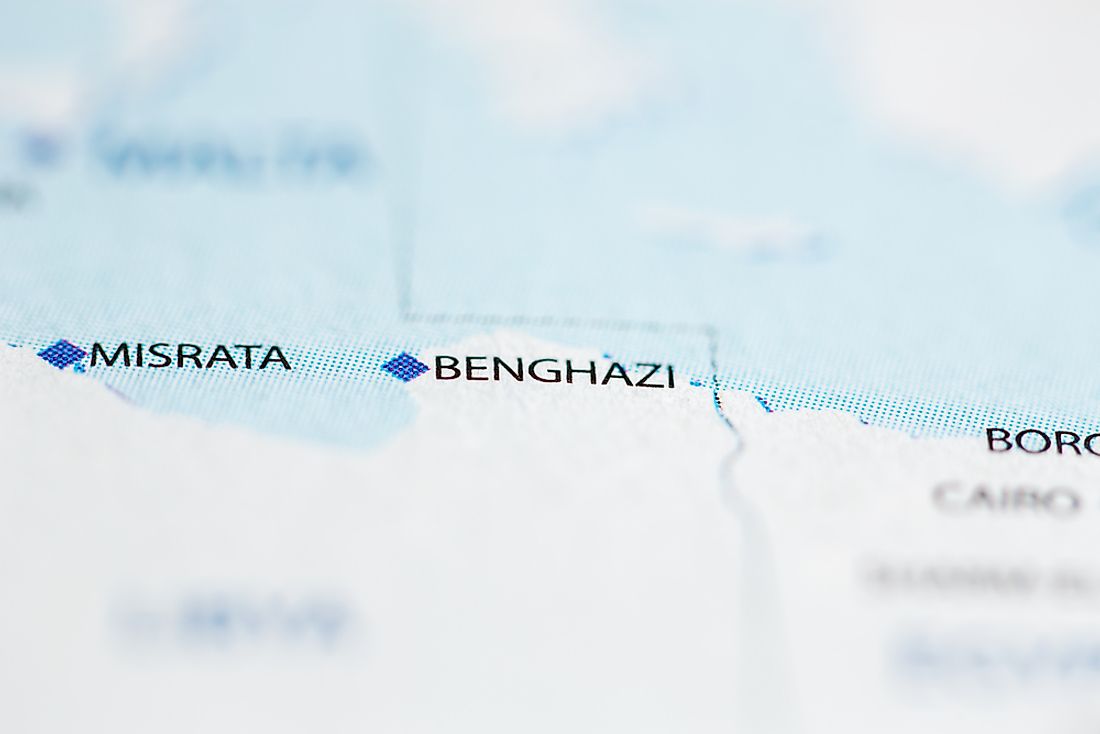Where Is Benghazi?

The Libyan city of Benghazi was thrust into the limelight in 2002 following an attack on the US diplomatic mission. It ranks as Libya’s 2nd largest city and the biggest in Cyrenaica. Benghazi is a port on the Mediterranean coast in Libya and is home to significant institutions including Libya's parliament, the headquarters of the Libyan Airlines, and the national library. Since the capital city normally hosts such institutions, rivalry exists between Benghazi and Tripoli. Benghazi's history began with the growth of a Greek city named Euesperides from 525 BC. The contemporary city features historical monuments such as old mosques and libraries, theaters, markets, recreation parks, clothing stores among other amenities.
Geography Of Benghazi
Benghazi is among the subregions of the area called Cyrenaica. Cyrenaica is bordered by desert on its three sides while the Mediterranean lies on the fourth side. The city is surrounded by the ‘barr' arid steppe while the Jebel Akhdar lies to its north. The climate and vegetation to Benghazi's north are more of Mediterranean in contrast to the desert landscapes to the south. The area to the northeast of Benghazi is fertile, and it facilitated the settlement of Greeks in ancient times. Benghazi's soil has a rich red color, and as Sirocco winds are common, the city's buildings and smaller streets can be dusty. A narrow strip of Mediterranean farmland exists to the city's north where Mediterranean fruits such as olives are cultivated.
Demographics Of Benghazi
The population of eastern Libya is predominantly of Arab descent. Benghazi has however witnessed the immigration of communities from Africa in recent times. Egyptians and Greeks are among the immigrants in the city. Crete Island, which lies in proximity to Benghazi, has had some level of influence among its population as evident with numerous families in Benghazi identifying with Cretan surnames. Although the majority of Libyans living in the city have Arab-descent, there exists a minority with Berber-descent. Benghazi's population is estimated at 631,555.
2011 Revolution
Peaceful protests were witnessed in the city in February 2011, but they were brutally quelled by the Kalb forces loyal to Gaddafi as well as by the regime's other loyalists. This violence encouraged the city's residents to organize uprisings geared to forcing Gaddafi's regime out of government. These protests developed into a full-blown revolution where at least 500 individuals lost their lives in the protests. Demonstrators flew the Libyan flag used under the Kingdom of Libya, and they also held the images of King Idris I. The city and the larger Cyrenaica area have traditionally been supporters of the Senussi dynasty. Benghazi subsequently fell into opposition hands, and it was where the National Transitional Council headquarters was hosted from February 26 to August 26.
2012 Attack On US Diplomatic Mission
125 to 150 gunmen stormed the US diplomatic compound in the city on September 11th, 2012. The logo of the militant group Ansar al-Sharia was visible in the truck the gunmen used. This group goes by the name Al Qaeda in the Arabian Peninsula. The group was then working in collaboration with Benghazi's local government to maintain security in the city. Four US officials lost their lives including the ambassador J. Christopher Stevens. The gunmen staged a string of raids from nightfall to the morning, and ten other individuals survived the ordeal with injuries.











